
Of all the many wonders of this world, there are few more wondrous than the Pyramids. These towering triangular structures remain a much-talked-about subject, inviting conspiracy theorists and historians alike to speculate on various aspects of their construction and structural fortitude (especially those that have stood for nearly 5000 years). The pyramids that get the most attention are, naturally, the Pyramids of Egypt, like the Ancient Pyramids of Giza, that lie beside the Great Sphinx. But pyramids are by no means limited to any single location. And each surpasses the last in its greatness!
Pyramids can be found worldwide, and even come in the form of easily accessible (and equally stunning) Step-pyramids. The largest pyramid (by volume) in the world is located in Mexico! The Great Pyramids of the world hold our past and the treasures of ancient civilizations that we succeeded. Get ready to take a journey across a few of these beautiful and historical high rise structures that have withstood all tests of time and beauty.
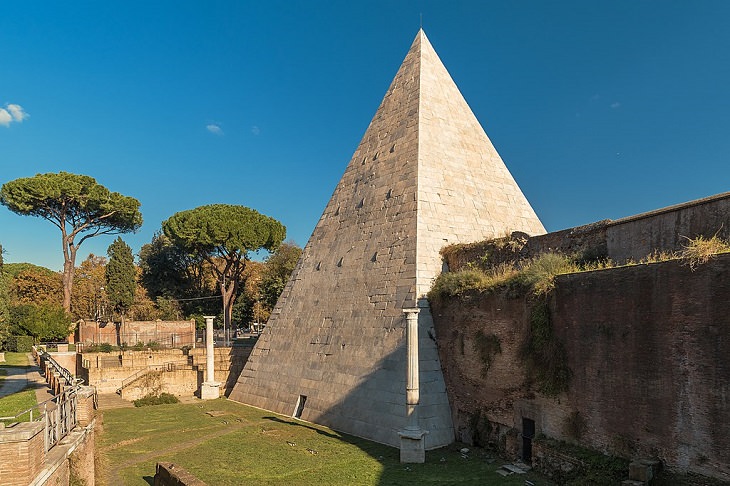
(By Rabax63, Wikimedia Commons)
Near the Porta San Paolo in Rome, Italy is an ancient pyramid wedged between two ancient roads, one that ran beside the Via Marmorata along the Tiber River, and the Via Ostiensis led to the major seaport, Ostia Antica.
Built between 18 and 12 BC, this colossal, 100-foot tall tomb was constructed with brick-faced concrete slabs covered in white marble. It serves as the burial chamber for a magistrate and member of one of the great collegiums, Gaius Cestius

(By Wufei07, Wikimedia Commons)
The ancient city of Meroë once stood on the eastern banks of the Nile River, in the region of Nubia north of Sudan. The whole area was home to 3 Kingdoms of Kush, the last of which was Meroë, home to these gorgeous sandstone and granite Nubian pyramids.
First built as early as 751 BC by the kingdoms' rulers, their Egyptian predecessors inspired these 35 pyramids, and today, half as many of them are still standing. After being partly destroyed by Italian treasure hunter Giuseppe Ferlini, some have since been restored, and they are officially listed as a UNESCO World Heritage Site.
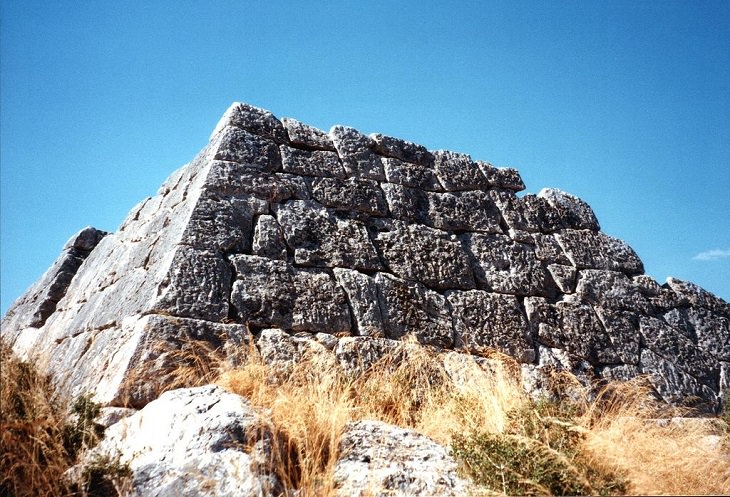
(By Schupp, Wikimedia Commons)
Ancient Greece had its own plethora of pyramids (not limiting themselves to only coliseums). The Greek pyramids stood on the plains of Argolid, leading to them being called the Pyramids of Argolis. Most of these temples and tombs, which were likely used for the burial of soldiers in 669 BC, have been lost to the trials and tribulations of time.
However, two still remain standing, and though they require care and preservation, they offer much historical insight. One is in the village of Liguria and the other, depicted in the photograph, is in the region Hellinikon.
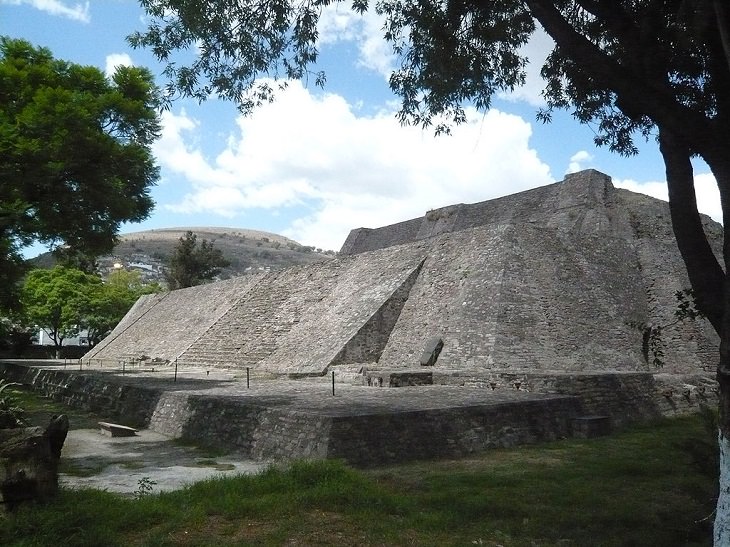
(By Maunus, Wikimedia Commons)
Tenayuca is a Mesoamerican archeological site that rests on the highland plateaus of the Valley of Mexico, just 6 miles northwest of Mexico's heart. It is believed to have been the nomadic Mexican tribe's original settlement, the Chichimec, who settled in the region and formed separate kingdoms.
The Aztec pyramid in the site was likely built in the 13th century and enlarged on multiple occasions, approximately after every five decades. The pyramid's platform is supported by 138 stone statues of serpents, which bear the mark of Xiuhcoatl (the fire serpent), as the temple was believed to be one of sun worship.
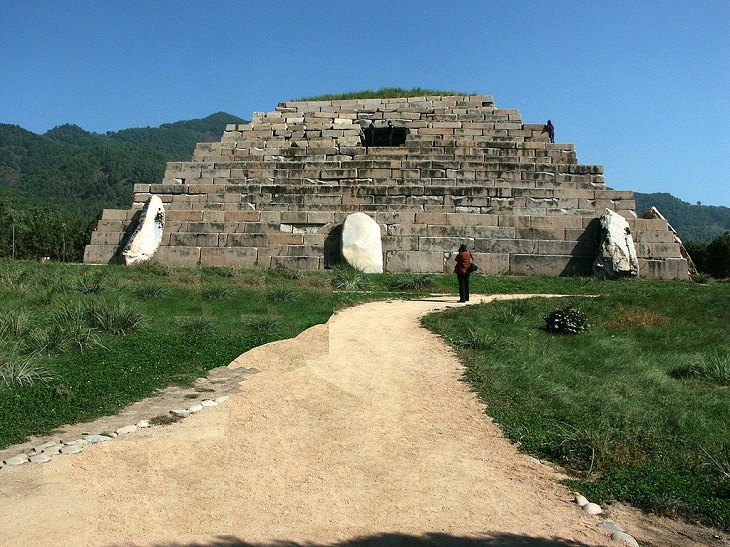
(By kevsunblush, Wikimedia Commons)
Unbeknownst to the Western World until the 20th century, China has also been home to numerous ancient pyramids or pyramidal mound-like structures built as tombs and mausoleums for the Emperors and their relatives. The legend of the tomb of Emperor Wu of Han, the Great White Pyramid, gained much notoriety though its presence was never officially confirmed.
Built during the Goguryeo Kingdom era, between 38 and 660 BC, the step pyramid in the photograph is located in Ji'an, Jilin, China, and is believed to house the remains of a notable general.

(By Nina, Wikimedia Commons)
Also known as the Pyramid of Cheops, another name for Emperor Khufu, we know this monument best as the Great Pyramid of Giza. This massive tomb commissioned by the 4th dynasty pharaoh Khufu was built over two decades, using 2.3 million bricks of granite and limestone. It remains one of the tallest man-made structures in the world.
Created as far back as 2560 BC (that's about 4500 years ago), several theories around the construction of this masterpiece have emerged over the centuries as to how the structure was designed, the manner in which each block was lifted and placed, and even the strength and skill of the workforce.
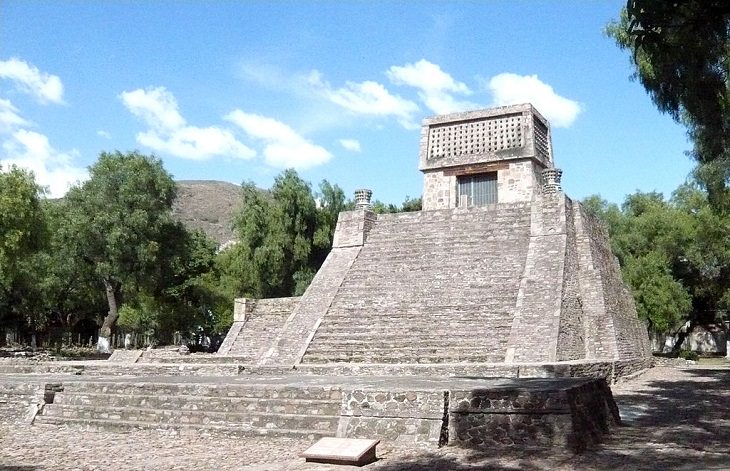
(By Maunus, Wikimedia Commons)
Just a few miles away from the archeological zone, Tenayuca is the ancient site of Acatitlan, another Aztec settlement built in the 13th century that was once believed to have been a part of Tenayuca before being annexed by the indigenous rulers of the Valley of Mexico.
One of the settlement's main structures is a quadrangular temple; a step-pyramid referred to as The Pyramid of Santa Cecilia Acatitlan. The interiors of the place of worship are among the best preserved in the world. Though the pyramid has received a few upgrades and clean-ups, it still remains one of the best examples of still standing Mexica style construction.
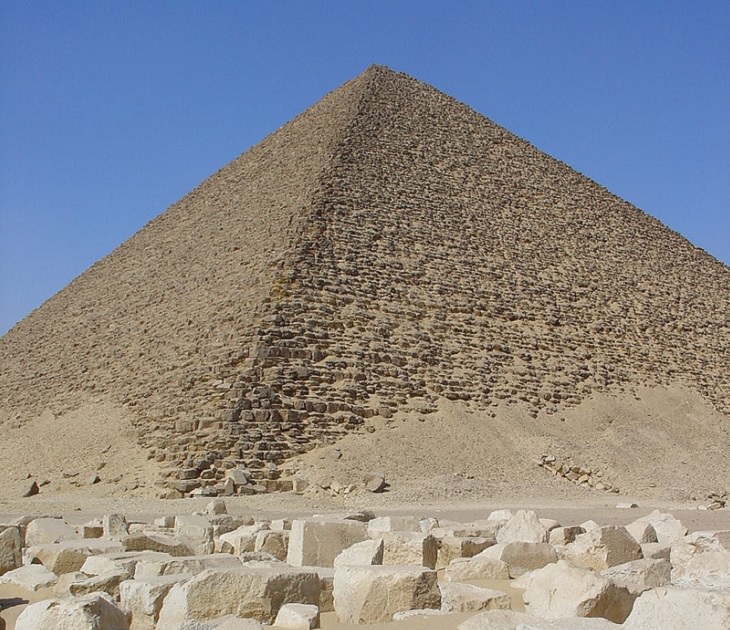
(By Ivrienen, Wikimedia Commons)
This Egyptian temple is located in Cairo and is the largest of the three found within the Royal necropolis of Dahshur. After the brother pyramids in Giza, the Pyramid of Khufu and the Pyramid of Khafre, the Red Pyramid, also known as the North Pyramid, is the 3rd largest pyramid in Egypt. It was reportedly built during the reign of Sneferu, approximately around 2590 BC, and took an estimated 10 to 20 years to build.
Made entirely of red limestone (contributing to both its hue and its name), this pyramid is believed to have been the Ancient Egyptians' first successful attempt to build a true smooth-sided pyramid. The pyramid was originally coated with Tura limestone, giving it a white hue. However, most of the Tura limestone was taken for constructing other buildings, revealing the red limestone beneath.
Spread the knowledge by sharing this!